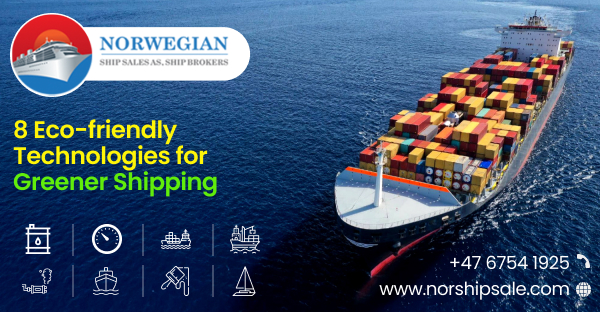The maritime industry forms an integral part of the global trade sector. From large tankers transporting food grains and raw materials to cruise ships used for tourism, marine vessels are always in demand. As a result of this, marine pollution (both air and water) is on the rise. The industry, as a whole, has been trying out new technologies to reduce the fuel consumption by marine vessels, which in turn, can reduce their carbon emissions. If you have been looking at cruise ships for sale to invest in, it is wiser to choose a ship with the latest green technologies incorporated in it. Below, take a look at some of the greener shipping trends.
Switch to Low-Sulphur Fuel
Cutting down the fuel consumption for ships is one of the effective ways to reduce carbon emissions caused by the maritime sector. To this effect, the industry has been trying out new fuels with low carbon content so that ships release a lesser number of greenhouse gases into the air. Switching to a low-sulphur fuel is a much more sustainable option. It is low on impurities like ash and sulphur and doesn’t release toxic gases into the environment. This helps to substantially lower the harmful emissions from diesel combustion.
Slower Speeds
Running your marine vessel at a slower speed can significantly reduce fuel consumption for a ship. For example, a large ship might burn somewhere between 280-300 metric tons of fuel in a day when steaming at high speeds, but it only burns about 80-90 metric tons of fuel at a slower speed. Hence, ships running at slower speeds can greatly reduce carbon emissions in a simple and efficient manner.
LNG Fuel for Propulsion
LNG fuel, or liquefied natural gas, is a recent innovation in the shipping industry. It is a cleaner and eco-friendlier fuel that can help reduce the air pollution caused by maritime vessels. Studies have estimated that replacing heavy bunker fuel with LNG fuel can reduce a ship’s sulphur oxide and nitrogen oxide emissions by almost 90-95 percent and cut down carbon dioxide emissions by about 20-25 percent.
A Ballast-Free System
Many large ships carry ballast water to keep a stable balance while travelling in ocean water. But ballast water tanks often become the breeding ground for unwanted micro-organisms and pathogens. This polluted ballast water has impacted marine biodiversity across many regions in the world. Greener shipping technologies are now moving towards a ballast-free system.
Introduce a Sulphur Scrubber Exhaust System
The standard marine fuel used today has high quantities of sulphur in it. When consumed, this fuel releases harmful greenhouse gases into the air. One way to combat this is by installing a sulphur scrubber exhaust system for large ships. It will capture the sulphur oxide gases before they can escape through the exhaust funnels and help reduce carbon emissions.
Optimized Hull Designs with Air Cushion Technology
The traditional round shaped hulls are not very efficient when it comes to cutting through the water. Modern hull designs nowadays come with air cushion technology for optimized propulsion. The front of the boat is shaped in such a way that an air cushion forms below the hull as soon as the ship starts moving. This reduces the friction between the large vessel and water, resulting in better propulsion with lesser fuel consumption.
Conclusion
If you’re looking to buy cruise ships for sale, we suggest choosing a vessel that has already incorporated some of these greener technologies. For a curated list of all the ships available in the market, contact Norwegian Ship Sales.


